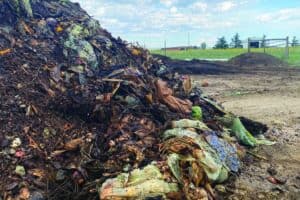The hype around Comet ISON hasn’t lived up to reality so far. However, astronomers hope that if the comet survives its trip around the sun, viewers will have a perfect opportunity to see it with the naked eye in early December.Local stargazers hoping to see the comet will need to find a place away from the light pollution caused by the Colorado Springs metropolitan area. Coloradoís high altitude and dry air could boost the ability to see the annual Geminid meteor showers, which peak Dec. 12 and Dec. 13, and the Quadrantids of Jan. 2.In a Nov. 27, 2012, article in The Denver Post by Douglas Brown; Mike Hotka, an amateur astronomer from Broomfield, Colo., said, ìAs the temperature drops, the humidity in the air freezes into ice crystals, so instead of a fog of water vapor, you have ice crystals, which makes the air more transparent. The stars are more crisp. The winter is by far the best time to observe.îReducing light pollution is not a priority of most land developers in Falcon. Doug Woods, Meridian Ranch developer, said it would not be addressed in the new commercial area on Meridian Road. ìWe wouldn’t want light pollution in Falcon to interfere with residents’ view of Colorado Springs’ light pollution,î Woods said. ìDown-directed lights can only go so far. We faced a similar issue in California with trying to limit light pollution for Palomar observatory. But they realized that when you’re looking through a telescope at a star billions of miles away, a streetlight way over in San Diego doesn’t make a difference.îWhile advanced large telescopes and computer imaging can deal with scattered light, streetlights and other light sources collectively impact naked-eye stargazing. In general, the farther you go from city lights, the better visibility will be. The measure of an area’s sky visibility is how much detail, if any, of the Milky Way a viewer can see. According to a light pollution map published by the University of Wisconsin, Falcon’s light level is similar to Monument and Fountain Valley. According to their data, at Falcon’s darkness, the Milky Way is generally ìwashed outî overhead and invisible near the horizon.Itís not until deep into Lincoln or Elbert counties that natural darkness is reached. True natural dark skies are only available in Colorado in the Comanche National Grassland in the southeast corner of the state, according to the university’s map.While increasing altitude tends to help star visibility even near metropolitan lights, Pikes Peak officials warn against using the peak for stargazing during winter. ìThe gates close early during the winter months because it’s not safe to travel the twisty roads at night in freezing weather,î said Mike Kavanagh, who manages the concessions on the peak. ìIf you try to stay on the peak with your car once the gates are closed, you’re going to pay a hefty fee to get out.îThe Colorado Springs Astronomical Society holds star parties at Palmer Park, Bear Creek Park and Fountain Regional Park. The organization also holds an annual event in June near Gardner, between Walsenburg and Great Sand Dunes National Park.The key to local stargazing, according to the CSAS, is to find a place away from nearby streetlights, where viewers won’t be blinded by passing headlights. Bright white lights can interrupt night vision for as long as 30 minutes. Viewers should also be careful to respect private property, park closing times and parking regulations.Local stargazing parties and guided tours of the night skies through club telescopes are available through the CSAS. Schedules and contact information is on their website, http://csastro.org.






